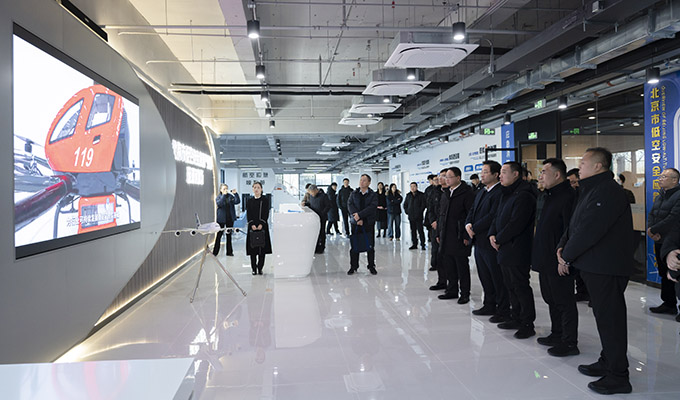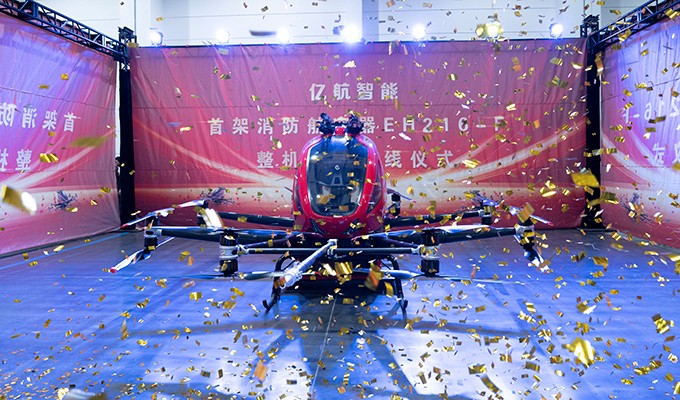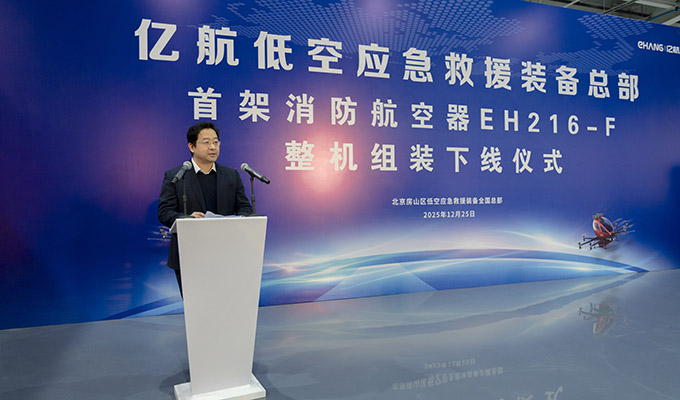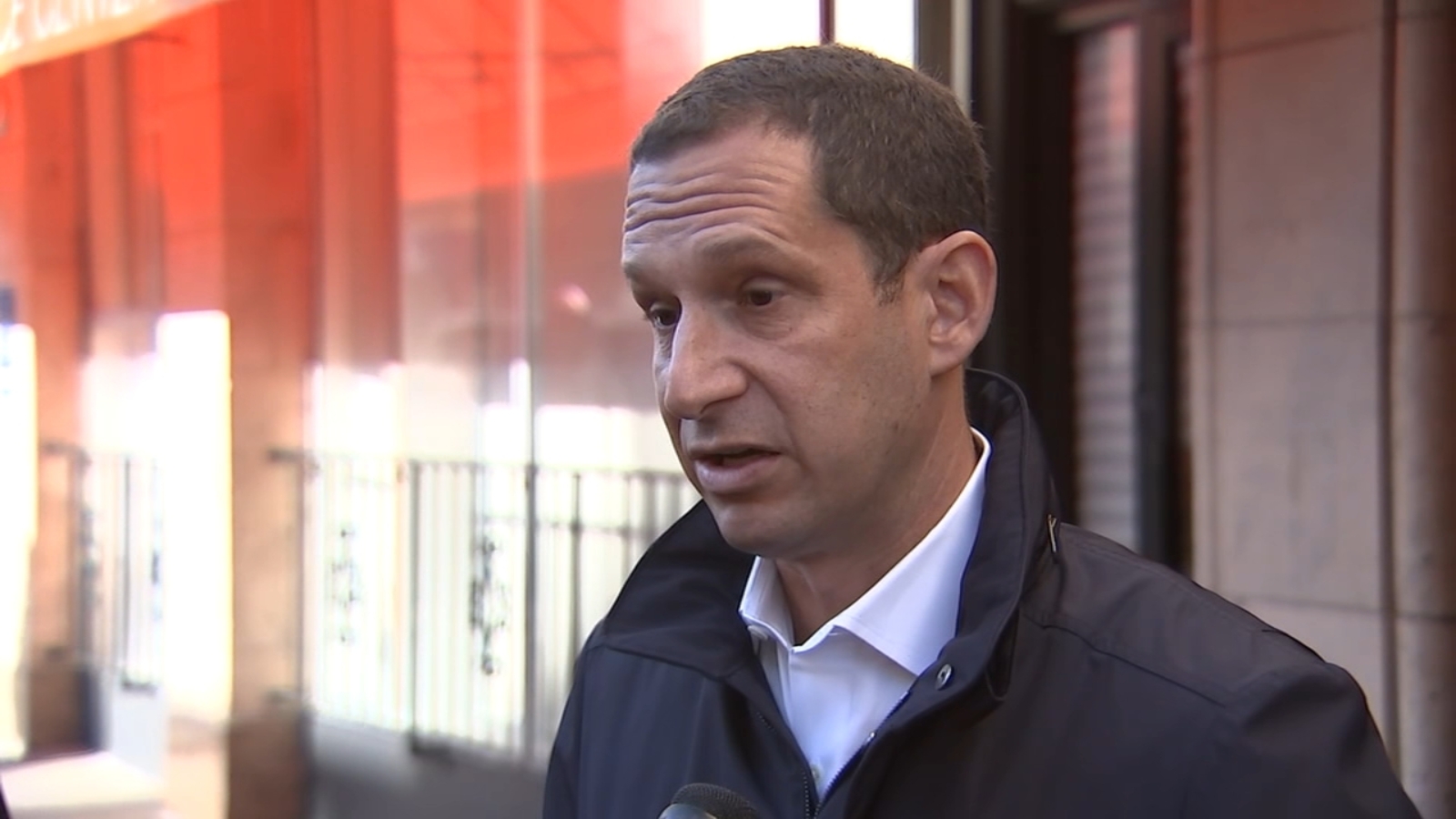There…
Blog
-
Molecular propensity and stress tolerance of dehydrins from desert plants
Gupta, S., Kaur, R., Upadhyay, A., Chauhan, A. & Tripathi, V. Unveiling the secrets of abiotic stress tolerance in plants through molecular and hormonal insights. 3 Biotech 14, 252 (2024).
Continue Reading
-
Pakistan: China | DD News On Air
In Pakistan’s Balochistan, a sit-in protest concerning the alleged forced disappearance of four family members, reached its second day today. It resulted in shutdown of China-Pakistan Economic Corridor (CPEC) highway for a second…
Continue Reading
-

China says 700 generative AI models filed as tech breakthroughs accelerate
CAC says HarmonyOS devices topped 1.19 billion in 2021-25 as embodied AI moves toward industry.
One robot was the clear winner against its competitors but was significantly slower than the human record. PHOTO: REUTERS
China achieved new breakthroughs in fields including integrated circuits, artificial intelligence (AI) and basic software over the past five years, with over 700 generative AI large model products having completed filing procedures, the Cyberspace Administration of China (CAC) said on Thursday.
During the 14th Five-Year Plan period (2021-2025), the total number of products equipped with HarmonyOS, an open-source operating system, exceeded 1.19 billion units, and embodied intelligence is gradually advancing toward industrial application, according to the CAC.
China has seen remarkable improvement in its information technology application, with internet penetration rising from 70.4 percent to 79.7 percent during the period, the CAC said.
Read More: 9th CPEC Media Forum brings together leaders
The country’s urban-rural gap in internet penetration narrowed by 8.2 percentage points compared to five years ago, the CAC said, adding that the rate of information technology application in agricultural production increased from 22.5 percent to over 30 percent.
In 2024, national online retail sales in rural areas exceeded 2.5 trillion yuan (about 355 billion US dollars), a 43 percent growth from the end of the 13th Five-Year Plan period (2016-2020). The telemedicine service network now covers all cities and counties across the country, according to the CAC.
Continue Reading
-
India hopes to seal the series; Sri Lanka aims to mount a meaningful challenge
The Indian players at a training session ahead of the 3rd T20I against Sri Lankan in Thiruvananthapuram.
| Photo Credit: NIRMAL HARINDRANContinue Reading
-
2025 proved to be landmark year for Pakistan: Diplomat – RADIO PAKISTAN
- 2025 proved to be landmark year for Pakistan: Diplomat RADIO PAKISTAN
- 2025: The Year Pakistan Stepped Back into the Spotlight The Diplomat – Asia-Pacific Current Affairs Magazine
- Pakistan ‘winner’ of US foreign policy driven by Trump’s…
Continue Reading
-

EHang Announces First EH216-F Firefighting eVTOL Aircraft Rolled Off from Assembly Line at Low-Altitude Emergency Rescue Equipment Headquarters in Beijing
Beijing, China, December 25, 2025 – EHang Holdings Limited (Nasdaq: EH) (“EHang” or “the Company”), the world’s leading Advanced Air Mobility (“AAM”) technology platform company, announced that the first EH216-F electric vertical take-off and landing (“eVTOL”) firefighting aircraft has been rolled off from the assembly line at EHang’s Low-Altitude Emergency Rescue Equipment Headquarters (“the Headquarters”) in Fangshan District, Beijing. Marking the first anniversary of the Company’s strategic cooperation with the local government, this milestone marks a solid beginning for the Company’s manufacturing in the low-altitude emergency rescue sector through a benchmark project of government-enterprise collaboration and the integration of industrial production with R&D.
Government officials visit EHang’s Fangshan headquarters in Beijing, accompanied by Zhao Wang, Chief Operating Officer of EHang, and other executives.
The rollout ceremony took place this afternoon of at the Headquarters in Fangshan District, Beijing. Leaders including Zhixin Di, Deputy Secretary of the Fangshan District Committee and District Mayor, as well as Wujun Gao, Deputy District Mayor, attended the event. Accompanied by Zhao Wang, Chief Operating Officer of EHang, and other senior executives, the guests toured the EH216-F firefighting eVTOL assembly line.
The rollout ceremony took place this afternoon at the Headquarters in Fangshan District, Beijing. Attendees included leaders from the Beijing Fangshan District Government and Kun Guo, Chairman of Beijing Xinzhi Airport Management Co., Ltd and so on. Accompanied by Zhao Wang, Chief Operating Officer of EHang, and other senior executives, the guests toured the EH216-F firefighting eVTOL assembly line.
Since December 2024, EHang and Fangshan District Government have implemented a strategic partnership centered on “one headquarters, multiple scenarios, full-industry coverage” to build the Low-Altitude Emergency Rescue Equipment Headquarters. Supported by Fangshan’s “Six Ones” industrial framework—comprising a target industry, a dedicated coordination team, an affiliated university, an industry fund, a startup incubator, and a specialized industrial park—the project has progressed efficiently. The initial phase of factory construction has been completed, and the site will continue to be developed into a comprehensive base integrating R&D, testing, assembly, maintenance, and training, laying a solid foundation for the sustainable development of China’s low-altitude emergency rescue sector.

Zhao Wang (first from left), Chief Operating Officer of EHang, and guests attend the rollout of the first EH216-F firefighting eVTOL at EHang’s Fangshan headquarters in Beijing.
China’s 15th Five-Year Plan (2026-2030) has reinforced the low-altitude economy as a strategic emerging industry cluster, with ongoing policies promoting industrial innovation. The General Aviation Equipment Innovation and Application Implementation Plan (2024–2030) also targets the commercial deployment of unmanned, electric, and intelligent general aviation equipment in emergency rescue and other fields by 2027. Leveraging Beijing’s strategic position, EHang intends to build a national benchmark project at the Headquarters in Fangshan, advancing modern emergency rescue management and high-quality development of the low-altitude economy during the 15th Five-Year Plan period.

First fully assembled EH216-F at EHang’s Beijing Fangshan low-altitude emergency rescue base
Fangshan District will continue to deepen its leading cooperation with key industry players such as EHang, with a focus on key areas including aircraft manufacturing and aviation batteries, while promoting technology and resource integration across the entire value chain. Leveraging the advantages of our industrial park, Fangshan will actively participate in the coordinated low-altitude emergency rescue development across the Beijing–Tianjin–Hebei region, facilitate cross-regional aerial connectivity, and build a service support platform for industrial chain upgrading

Zhao Wang, Chief Operating Officer of EHang deliver a speech at the ceremony
Zhao Wang, Chief Operating Officer of EHang, added: “Low-altitude emergency rescue sector is not only a vital component of the low-altitude economy, but also a key direction for developing aerial rescue capabilities and advancing integrated social security systems. It represents a strategic fulcrum for fostering and strengthening new quality productive forces. Since partnering with the Fangshan District Government, both sides have been committed to building a new ecosystem for the low-altitude emergency rescue sector, aiming to establish a national benchmark project for early-stage deployment and trials, featuring comprehensive and scalable capabilities. The successful assembly of the first EH216-F at the Headquarters in Fangshan signifies a positive beginning for low-altitude firefighting equipment manufacturing in the Beijing-Tianjin-Hebei region, laying the groundwork for the subsequent development of the low-altitude emergency rescue industry. Moving forward, we will continue advancing innovation in pilotless eVTOL technologies, working closely with Fangshan District Government and industry partners to further strengthen the low-altitude emergency rescue ecosystem. Through these efforts, we aim to deliver safer, smarter, more efficient, and greener low-altitude solutions for the modernization of China’s emergency rescue systems during the 15th Five-Year Plan period.”
About EHang
EHang (Nasdaq: EH) is the world’s leading advanced air mobility (“AAM”) technology platform company, committed to making safe, autonomous, and eco-friendly air mobility accessible to everyone. The company develops and manufactures a diversified portfolio of pilotless electric vertical take-off and landing (“eVTOL”) aircraft for a wide range of use cases, including aerial tourism, intra-city transport, intercity travel, logistics and emergency firefighting. Its flagship model, EH216-S, has obtained the world’s first type certificate, production certificate and standard airworthiness certificate for pilotless eVTOL issued by the Civil Aviation Administration of China, and is now commercially operated under the country’s first Air Operator Certificates for human-carrying eVTOL services. Complementing this, EHang’s VT35 expands its reach into long-range and intercity scenarios, supporting the development of a multi-tiered low-altitude mobility network. By integrating advanced autonomous technologies with scalable operational infrastructure, EHang is redefining how people and goods move—across cities, regions, and natural barriers—shaping the future of air mobility. For more information, please visit www.ehang.com.
Safe Harbor Statement
This press release contains statements that may constitute “forward-looking” statements pursuant to the “safe harbor” provisions of the U.S. Private Securities Litigation Reform Act of 1995. These forward-looking statements can be identified by terminology such as “will,” “expects,” “anticipates,” “aims,” “future,” “intends,” “plans,” “believes,” “estimates,” “likely to” and similar statements. Statements that are not historical facts, including statements about management’s beliefs and expectations, are forward-looking statements. Forward-looking statements involve inherent risks and uncertainties. A number of factors could cause actual results to differ materially from those contained in any forward-looking statement, including but not limited to those relating to certifications, our expectations regarding demand for, and market acceptance of, our products and solutions and the commercialization of UAM services, our relationships with strategic partners, and current litigation and potential litigation involving us. Management has based these forward-looking statements on its current expectations, assumptions, estimates and projections. While they believe these expectations, assumptions, estimates and projections are reasonable, such forward-looking statements are only predictions and involve known and unknown risks and uncertainties, many of which are beyond management’s control. These statements involve risks and uncertainties that may cause EHang’s actual results, performance or achievements to differ materially from any future results, performance or achievements expressed or implied by these forward-looking statements.
Continue Reading
-
18th Aalmi Urdu Conference begins in Karachi – RADIO PAKISTAN
- 18th Aalmi Urdu Conference begins in Karachi RADIO PAKISTAN
- 18th Aalmi Urdu Conference kicks off The Express Tribune
- Aalmi Urdu Conference 2025 set to kick off in Karachi Times of Karachi
- Four-day World Urdu Conference begins at Arts Council…
Continue Reading
-

Fly through Webb’s cosmic vistas
On the launch anniversary of the NASA/ESA/CSA James Webb Space Telescope, ESA presents a unique compilation of zooms into stunning cosmic views.
So embark on a special journey: as if aboard a virtual spaceship, this video will take you…
Continue Reading
-

Mayor Daniel Lurie calls for PG&E rate cuts after holiday outages as San Francisco leaders demand answers
SAN FRANCISCO (KGO) — In the fallout from PG&E’s citywide holiday weekend outages, San Francisco Mayor Daniel Lurie is calling on the utility to lower its rates, joining a growing chorus of city and state leaders who say frustration with the company is nothing new.
“I spoke to the CEO yesterday. I told her my frustrations with the communications,” Lurie told ABC7 News on Wednesday. “Our ratepayers are paying far too much for the collapse, so I want to see rates going down.”
The outages upended holiday plans across the city, leaving residents scrambling just days before Christmas.
“It was just a huge inconvenience,” said San Francisco resident Sunshine McLawhorn. “You need to take care of the people who pay a lot of money for that power. I just had to go grocery shopping yesterday, $400 just to make up for what I lost. So we need to do better, PG&E.”
MORE: SF power outage spurs utility scrutiny; political leaders calls for PG&E reform
The outage has also become a flashpoint in the 2026 governor’s race, with candidate Tom Steyer using the moment to renew his push for PG&E’s reform.
PG&E says it is offering automatic rebates ranging from $200 for residential customers to $2,500 for businesses.
Lurie says his concern now is ensuring customers aren’t ultimately left paying for PG&E’s mistakes.
“We have to make sure that the ratepayers are not the ones that pay for this,” he said. “They have admitted that it was their fault. They’ve set aside $50 million. I think that is a good first step. But we need more from PG&E. We need to make sure that there are no future blackouts. We need to know that their infrastructure is sound.”
But city leaders say the outage has reignited deeper concerns – especially given the city’s history with PG&E.
Twenty-two years ago, San Francisco experienced a similar blackout tied to a fire at the same downtown substation.
State regulators later found the 2003 failures were avoidable, concluding PG&E had not resolved issues identified after an earlier fire at that facility in 1996.
RELATED: San Francisco’s power outage problems persist even after citywide restoration
That history is now fueling renewed scrutiny at City Hall.
“There’s some things that we all need to get some answers to,” Supervisor Matt Dorsey told ABC7 News.
The San Francisco Board of Supervisors plans to hold hearings with PG&E after the holidays – with some supervisors openly discussing more drastic measures.
“That would be where the city and county of San Francisco takes over, basically purchases PG&E’s infrastructure in San Francisco, and they run it as a municipally owned utility,” Dorsey said.
Dorsey pointed to accountability and cost when asked if residents could trust the city to do a better job.
“The result would be that we would have better rates. I think it would be more affordability. And we would have more accountability,” he said.
RELATED: SF Sunset businesses rally after 40-hour PG&E outage coincides with winter solstice celebration
A city takeover would not be quick. In 2021, San Francisco asked the California Public Utilities Commission to evaluate how much it would cost to acquire PG&E’s local assets – an ongoing process that could take years.
State Sen. Scott Wiener – who is running for San Francisco’s congressional seat – says he plans to introduce legislation in Sacramento early next year aimed at speeding up that process.
“We want to make it even more straightforward and create an even clearer path, for cities like San Francisco, to be able to break up with PG&E,” Wiener said.
PG&E leadership has issued public apologies in the days since the outage.
“We will not rest until we know what happened,” said COO Sumeet Singh in a Tuesday social media video. “We know we need to do better in providing you with accurate estimated time of restorations.”
Singh did not provide specifics when ABC7 News asked what system upgrades PG&E has made to the substation at Mission and 8th Streets since the 2003 fire, but said the utility company has invested about $200 million at the facility.
He noted the SoMa facility underwent preventative maintenance in October and conducted its most recent bimonthly inspection Dec. 5. Singh said neither inspection identified any problems.
Copyright © 2025 KGO-TV. All Rights Reserved.
Continue Reading